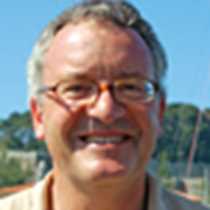Culloden, Clava Cairns, Loch Ness
Our first full day provided an intensive introduction to some of the highlights of the country’s history and landscape. Modern Scotland may be said to have begun with the failure of the last Jacobite Rising at the battle of Culloden in 1746 and with the economic transformation of the Highlands that ensued. The Stuart dynasty were the rightful heirs to the throne and were Scottish but to the English establishment their Catholicism made them a dangerous threat to the established order. Contained within the conflict therefore were both ethnic and religious differences. The defeat at Culloden was followed by what some historians have described as an example of ethnic cleansing with mass evictions of the Gaelic-speaking and largely Catholic peasantry from their homes and the forcible emigration on many, largely to Canada. Today, more Gaelic is spoken in Canada than in Scotland itself. People were replaced by sheep and the surviving clan chieftains switched sides to become loyal Protestants and part of a larger British establishment. The battlefield site is a poignant reminder of these events with an excellent award-winning visitor centre.
Our next stop saw us moving back in time over several millennia to the earliest settled peoples of these islands, Neolithic and early Bronze Age agriculturalists. Clava Cairns are part of the village of the dead of one of these communities: an adjacent village of the living, wooden huts, made of living materials, has long since decomposed in the acidic soils. The dead were buried in stone villages, here in splendid examples of passage grave tombs.
Returning to the ship for lunch, we set sail over Loch Ness, an extraordinary body of water reaching depths of a thousand feet. These mysterious depths have fuelled the legend of Nessie the monster, the first reference to her being in a seventh-century life of Columba. For Columba sailed across Loch Ness, in the opposite direction, bringing the Christian gospel out of Iona to the lands of the Picts.
On arrival at Fort Augustus, we had several options. Kayakers took to the waters of the loch in search of Nessie, shorter walks visited the Caledonian Canal museum and the rare breeds farm and a longer walk that encompassed the cleared village of Cilchumein, with its poignant burial ground.




